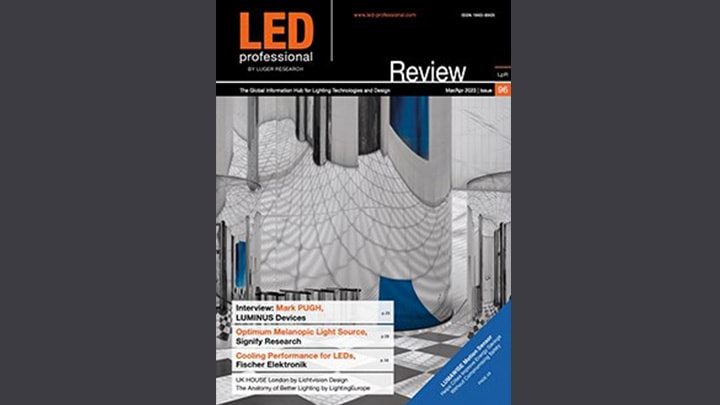
You may click on the image above to view the complete recording on YouTube.
While you may view the webinar you also will have an opportunity to appear for a short quiz and obtain the certificate if you successfully pass the quiz. Login here to take the assessment and obtain the certificate.
It is known that sufficient light nutrition during the day supports our circadian rhythm, i.e. makes us less sensitive to late-evening light to promote sound sleep and an easy wake up. The fact that we spend on average more than 90% of our time indoors in dim light conditions increases the risk of circadian misalignment.
Solutions with biological active light, comfortable brightness and a high activation during the day offer the most effective way to create a healthy indoor environment. But that also raises challenges, replicating the 10,000 to 100,000 lux that people experience outdoors is not realistic, or efficient, in an indoor setting.
Light to feel well, melanopic lighting is good for you!
In this month lecture we will explain that the market is more competitive but offers a very attractive place to invest in Health & Well-being.
This we do by lighting, there are lighting products on the market that can get you out of biological darkness. This field of so called Melanopic lighting will be explained during this session, and we will discuss how the right type and amount of light can be applied to achieve healthy indoor lighting at the best efficiency, so we still meet the call on climate action.
Learning objectives:

Rene Wegh
Principal Scientist
Signify Research

Peter Duine
Global Business Director Systems & Services
Office sub-segment, Signify

Ravi Koul
Customer Segment Manager
Signify
Dr. René T. Wegh is Principal Scientist and topic leader in the field of solid-state light sources at Signify. In that role he is overviewing the field and driving innovations on SSL sources. He has a 15-year track record on development of spectral engineering innovations at Philips Lighting/Signify, ranging from various remote-phosphor platforms in the early days to high-CRI and Human Centric Lighting spectral solutions in recent years. He holds a Ph.D. in solid-state chemistry from Utrecht University. He joined Philips in 1999, starting at the corporate Research lab where he worked on various topics, before moving to Philips Lighting in 2006. In his spare time he likes to go ice-skating in winter, mountain biking the rest of the year, and play music all year long.
Peter Duine is Global Segment Manager for the Office market of Signify’s systems and service business. Based in Eindhoven, NL, he joined Philips 25 years ago as an engineer in the Research Laboratories. He joined the Lighting division 15 years ago as an optical engineer, and was a pioneer in developing LED light engines and drivers as systems for general lighting applications. He then moved to product management and was responsible to develop a product line of OEM components for connected lighting. Peter holds Masters and PhD degrees in Solid State Physics from Delft University of Technology. In his spare time he enjoys running marathons and biking the tallest mountains all over the world.
Q 1. What are the ages of the subjects in this study resulting in the recommended level of 250? How are these recommended levels adjusted for different age groups?
Ans. The recommended daytime melanopic-EDI of 250 lux was derived based on data from (and intended to apply to) healthy adults (aged 18 to 55) with regular daytime schedules. It is known that younger and older people respond differently to melanopic light (younger respond more and older less), but so far no different recommended level has been defined for other age groups.
Q 2. Out of curiosity, is the user acceptability already tested for the proposed light conditions?
Ans. Retrieving data. Wait a few seconds and try to cut or copy again.
Q 3. what is a gaussian emitter ?
Ans. With "gaussian emitter" we mean a light source with a spectrum with a gaussian shape. Such a shape is a reasonable approximation of the real spectral shape of an emitter (both direct-emitting semiconductor and LED phosphor)
Q 4. You should use TM-30-15
Ans. As mentioned during the webinar: we use CRI as first spec on colour rendering for Signify products as that is the globally most accepted metric. TM-30-15 metrics are available or can be calculated.
Q 5. Is there a corrected graph for 3000 or 3500K available?
Ans. We have assessed Melanopic-DER vs LER at 4000K and 5000K; lower CCT makes less sense as the melanopic-MDER is inherently lower.
Q 6. When I go to the store, how do I know which light is better for Melanopic-DER? Just look at the kelvin light temperature? CRI? Lumens?
Ans. As we have shown in the webinar, the Melanopic-DER can be quite different at the same CCT or CRI, and since Melanopic-DER is a purely spectral parameter it is not related to lumens. So the only way is to specify Melanopic-DER by itself, as we do for our melanopic light products.
Q 7. What are your suggestions for residential lighting (i.e. table lamps)
Ans. The recommended minimum daytime melanopic-EDI of 250 lux applies to any type of lighting. But be aware: only during the day! Residential lighting will also be used in the evening, then the recommended maximum melanopic-EDI level is only 10 lux.
Q 8. can Signify CES LED tech apply for warmer CCT? like 2700K?
Ans. In priniciple it could be, but we don't have such a product at warm white CCT as the melanopic-DER is inherently low, so it will be very challenging if not impossible to reach the recommended daytime melanopic-EDI of 250 lux.
Q 9. Please can you mention the OEM portfolio for our customers who are looking to make their own luminaires using this technology?
Ans. There will be a webinar on this topic dedicated for OEM in March next year.
Q 10. What do you reacht met a bioup CES luminaire in the same condition
There is a study where the patients stayed shorter at the hospital with better lit spaces.
Ans. If a luminaire with a standard 840 spectrum reaches 125 MEDI lux, then with Signify CES you will reach close to 150 MEDI lux in the same condition (same luminaire, same flux, same light plan). With Signify CED at 5000K you will reach about 160 MEDI lux. The melanopic-EDI should be increased further by optimizing the luminaire and/or the light plan.
Q 11. Why existing lighting standards are silent on HCL?
Ans. Existing lighting standards are generally relatively old, while HCL is a relatively new topic.
Q 12. In North America we are seeing more use of IES TM-30 metrics in place of CRI. Any comment on how BioUp performs under TM-30 for Rf?
Ans. BioUp performs very similar on Rf as a standard CRI 80 LED spectrum does: Rf is around 80.
Q 13. Does it matter if the light to the eye comes from a small or large light source if the amount of the light is the same.
Ans. If the amount of light on the eye is the same and the angle of incidence is ~same, it does not matter for circadian stimulation if the light comes from a small or a large light source. But for other aspects e.g. glare it does of course.




Healthy Daytime Indoor Lighting – How to Design the Optimum Melanopic Light Source
By Dr. René T. WEGH, Principal Scientist and Dr. Ir. Mart P.J. PEETERS, Scientist; Signify Research